Adjusting the toilet bowl: 4 ways to troubleshoot
Each owner can periodically observe the occurrence of a continuous leak in the toilet from the cistern. This entails inadvertent waste and the unpleasant round-the-clock murmur twenty-four hours a day.
To eliminate such a malfunction, you can always call a plumber, but this will require additional financial costs. In fact, everything can be fixed with your own hands.
We will talk about how to do this in this article.
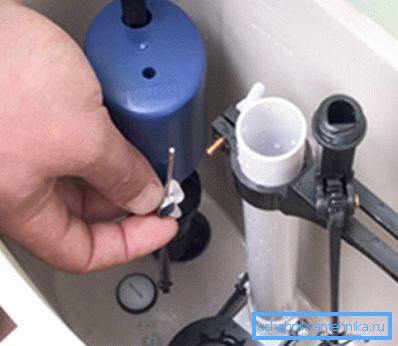
General provisions
Before you adjust the water level in the toilet bowl, you should pay attention to the peculiarities of its design. So let's consider the possible options depending on the trigger device, material and method of installation:
Types of drains
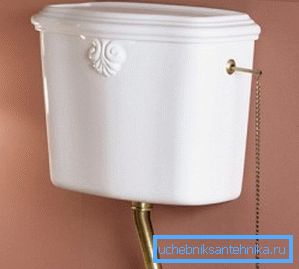
| Distinctive features | Possible options |
| Descent Location |
|
| Manufacturing material |
|
| Installation method |
|
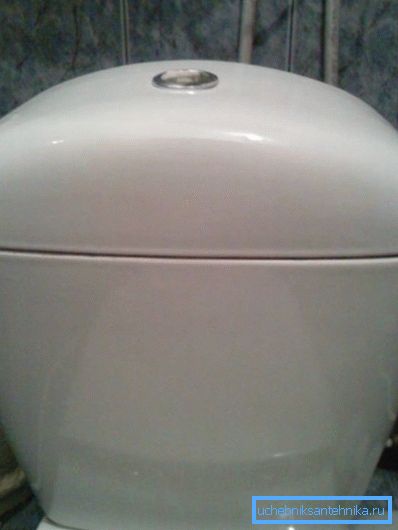
It should be noted that the price is more dependent on the material than on any other parameters. So plastic products will be much cheaper than models from ceramics or cast iron.
Design and principle of operation
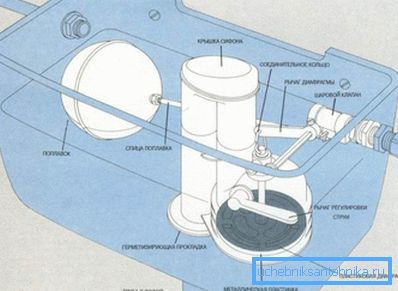
Adjusting the water level in the toilet bowl begins with a study of its design and principles of operation. So, what is located under the lid of the drain device:
| Item Name | Description and Purpose |
| Filling valve | A device that is responsible for the flow of water from the general plumbing system into the drain tank in a strictly limited quantity, which is controlled by the presence of a float ball. When the tank is filled with liquid to a certain level, the float floats up and a special plug blocks the flow of H2ABOUT. |
| Overflow | It is a small plastic tube located in the center of the device. Responsible for transporting excess water to the sewer. |
| Drain valve | This is the most important part of the design, which carries out its main function - the discharge of fluid into the toilet. The mechanism of the button located outside and the button or lever connected to it is activated. |
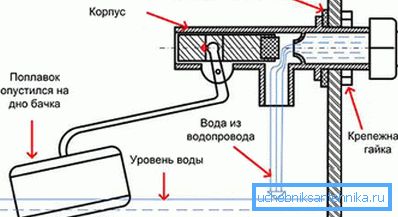
Adjustment
Adjusting the toilet cistern drain is necessary when there is a continuous flow below. Methods to solve the problem may be several:
Method number 1: correction of the position of the lever
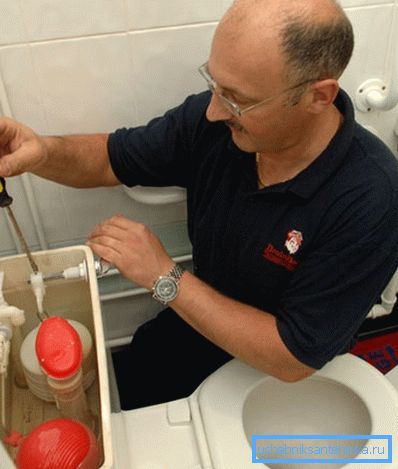
How to adjust the toilet cistern with the help of the correction of the float lever depends on the material of this lever:
- Brass. Brass detail is fully capable of buckling and is set manually.
- Plastic. In this case, the position of the lever is changed either with the help of the fixing screw, which is responsible for its bending, or with the help of the ratchet, which is responsible for fixing it at the desired point.
Tip: when working with a polypropylene lever, turn off and drain the water in advance so that it is more convenient for you to perform its adjustment inside the tank.
Method number 2: replacement of the check valve

If a check valve is leaking, it must be dismantled and a new one installed.
The replacement instruction looks like this:
- Without fail we let the water down so that you can get to the fixing screws.
- Remove the float lever.
- Disconnect the old valve.
- Install and fasten the new part.
- Fill the tank.
- We expose the float.
Method number 3: repair the float
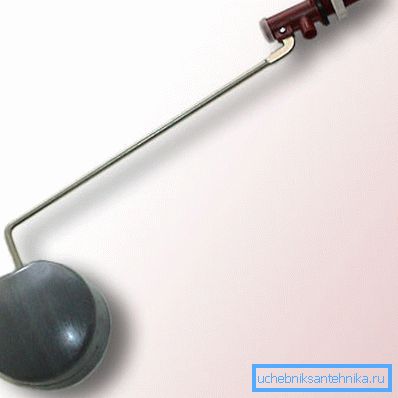
How to adjust the toilet bowl, if it has stopped rising float? This can occur due to damage to plastics (see also the article Old-style toilet cisterns — their design and repair recommendations).
Two solutions are possible:
- Repair, or rather the filling of holes with molten plastic.
Tip: at home, you can wrap the float in a plastic bag and slightly melt it. This option is simple, cheap and practical.
- Replace parts completely. In this case, should be guided by the degree of deformation.
Method number 4: replacement of the membrane

Membranes lose their elasticity over time and periodically need to be replaced, which is carried out as follows:
- Bind the float to the crossbar.
- Remove the water from the tank.
- Unscrew the mounting nut of the drain pipe.
- Replace the old membrane with a new one.
All the described activities can be done independently, without waiting for the plumber to arrive and save financial resources of the family budget. And only if the flow still has not stopped, call a specialist, because for further repair you will need special tools and skills.
Conclusion
We looked at how to adjust the flush of water in the toilet. At home, you can use one of the above four methods or several of them. This will help you to restore the tightness of the tank and allow you to do without an expensive call of a plumber (see also the article Inlet valve for a toilet bowl with a side entry - what you should pay attention to when choosing).

The video in this article provides additional materials that are directly related to the topic outlined. And remember: timely elimination of minor faults will help avoid the appearance of major breakdowns in the future.